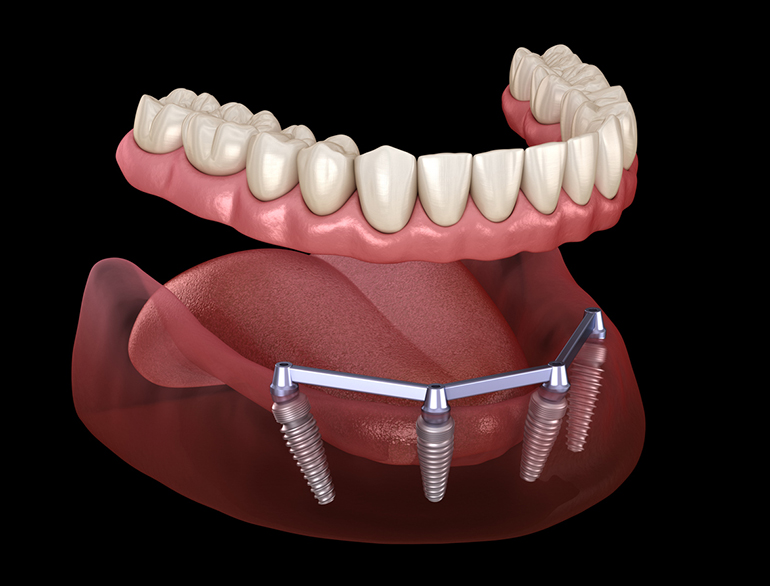What’s a Dental Bridge Look Like: A Comprehensive Guide

A dental bridge looks like a row of teeth, typically made of porcelain or porcelain fused to metal, attached in one piece to replace missing teeth and restore the appearance and function of the smile. In addition to the natural-looking row of teeth, there may be metal clasps or a framework that holds the false teeth in place behind the existing teeth.
Dental bridges can support up to three or four missing teeth, but longer bridges may be less stable. The bridge is custom-made and permanently attached using dental cement to the abutment teeth on either side of the gap. Overall, a dental bridge provides a natural-looking solution for missing teeth.
Dental Bridge Appearance
A dental bridge looks like a row of teeth, typically made of porcelain or porcelain fused to metal for added strength. It resembles natural tooth enamel and is securely attached to the abutment teeth on either side of the space.
| Dental Bridge Appearance |
|---|
| A dental bridge looks like a row of teeth; they just happen to be attached in one piece. It is typically made of porcelain because it is strong and resembles natural tooth enamel. Some bridges are made of porcelain fused to metal to increase the strength, especially for longer bridges. |
| Different types of dental bridges: |
|
Dental Bridge Structure
A dental bridge looks like a row of teeth; they just happen to be attached in one piece. It is typically made of porcelain because it is strong and resembles natural tooth enamel. Some bridges are made of porcelain fused to metal to increase the strength, especially for longer bridges.
In the simplest sense, a dental bridge looks like a row of teeth. However, there is much more to the structure of a dental bridge. For starters, there are four main components:
- Abutment teeth: These are the teeth on either side of the gap where the bridge will be placed. These teeth are prepared by removing a small portion of their enamel to ensure a proper fit for the crowns.
- Crowns: Custom-made crowns are placed on the abutment teeth to serve as anchors for the bridge. These crowns are usually made of porcelain or porcelain fused to metal.
- Pontics: These are the artificial teeth that fill in the gap left by the missing teeth. Pontics are also typically made of porcelain and are shaped and sized to blend in naturally with the surrounding teeth.
- Connectors: The crowns and pontics are connected together to form a single piece, creating the dental bridge.
Dental Bridge Placement
A dental bridge looks like a natural row of teeth, typically made of porcelain or porcelain fused to metal for strength. It is attached to abutment teeth on either side of a gap, holding false teeth in place. Dental bridges can be a reliable solution for replacing missing teeth.

Credit: blyssdental.com
Frequently Asked Questions Of What’s A Dental Bridge Look Like
How Long Do Dental Bridges Last?
Dental bridges typically last for several years, with proper care and maintenance. They can last up to 10-15 years or longer.
Is Getting A Dental Bridge Painful?
Getting a dental bridge is not painful. Your dentist will use a local anesthetic during the procedure. Pain relief medication is usually unnecessary afterward.
How Many Teeth Can You Have On A Bridge?
A dental bridge can support up to three or four missing teeth, but in some cases, it can support up to six teeth. Long-span bridges are not recommended as they are less stable without artificial roots.
How Does A Dental Bridge Stay In Your Mouth?
A dental bridge stays in your mouth by attaching to your abutment teeth using dental cement. Impressions are taken, and a bridge is built to fit perfectly over your trimmed teeth. The false teeth are held in place by the crowns, restoring your smile.
Conclusion
A dental bridge, made primarily of porcelain, resembles a row of teeth and is designed to replace missing teeth. It consists of crowns on either side, known as abutment teeth, with pontics, or false teeth, in between. The bridge is securely attached using dental cement.
This restoration not only restores the functionality of missing teeth but also provides a natural and aesthetic appearance. Dental bridges offer a reliable solution for those seeking to improve their smile and oral health.





